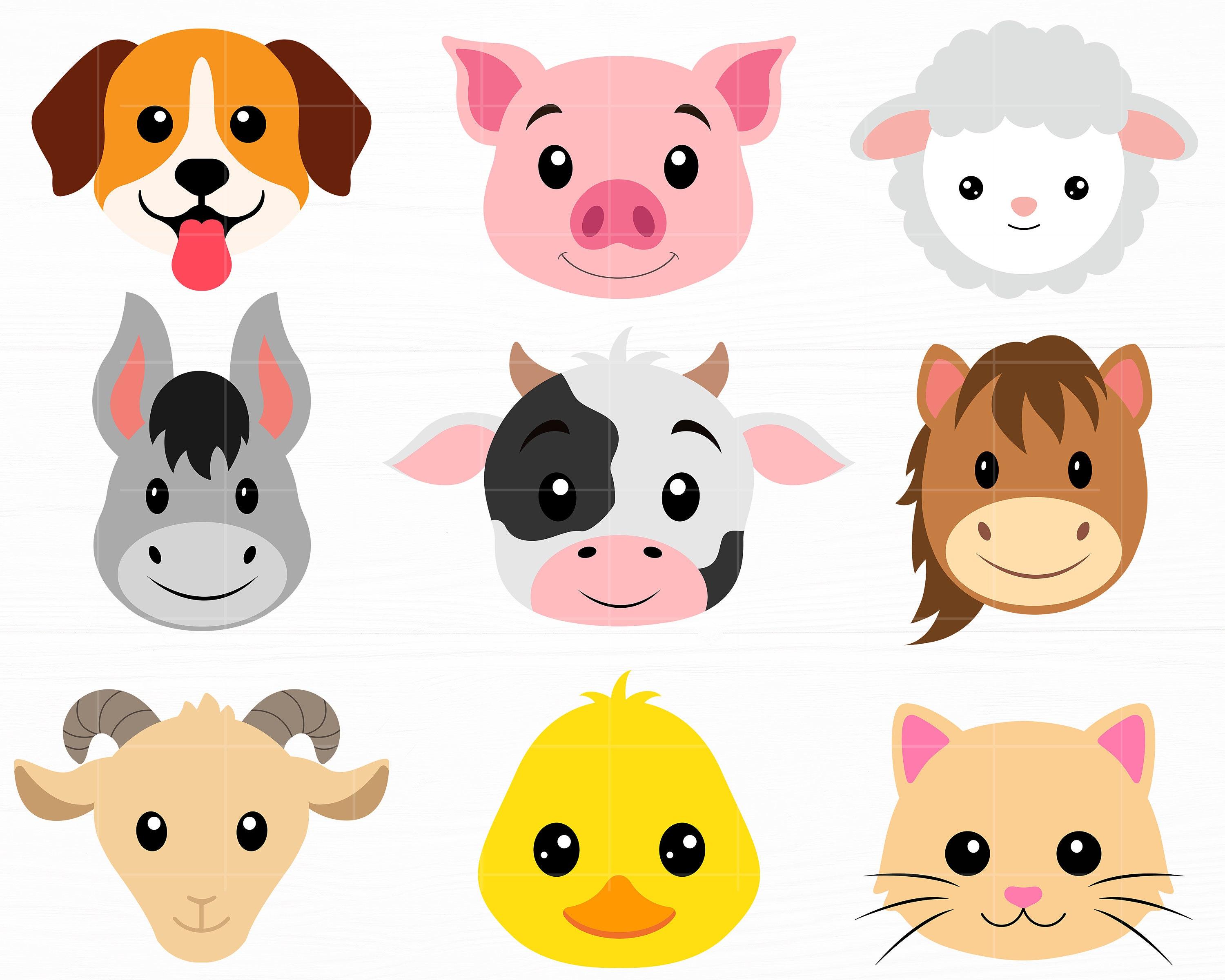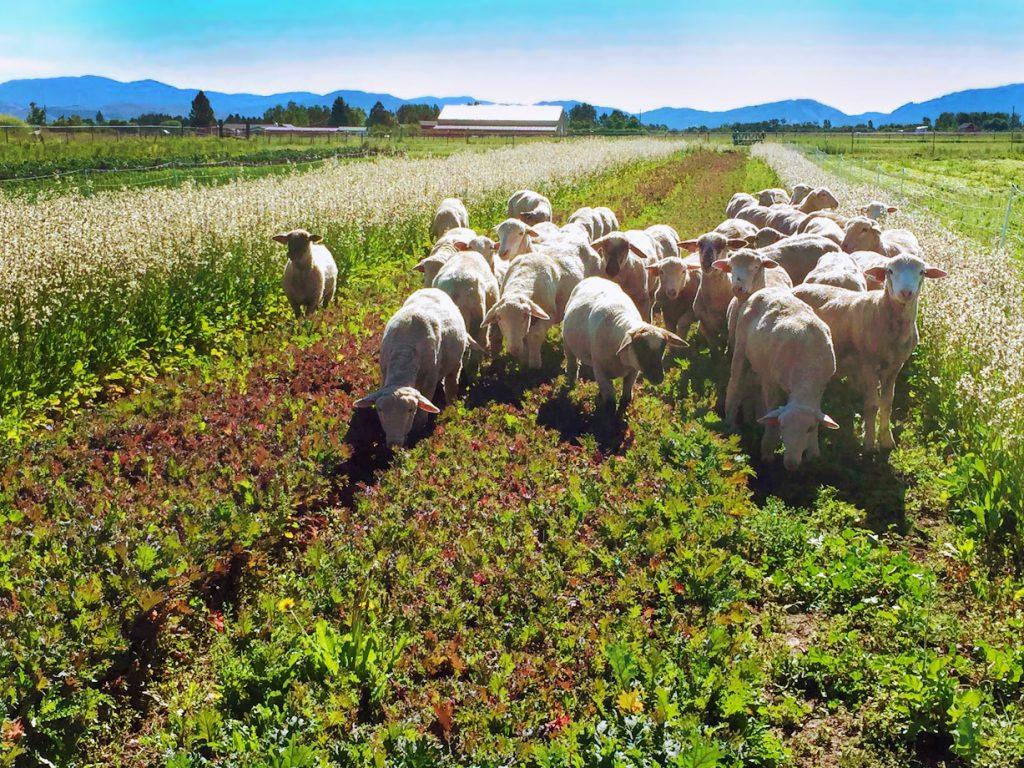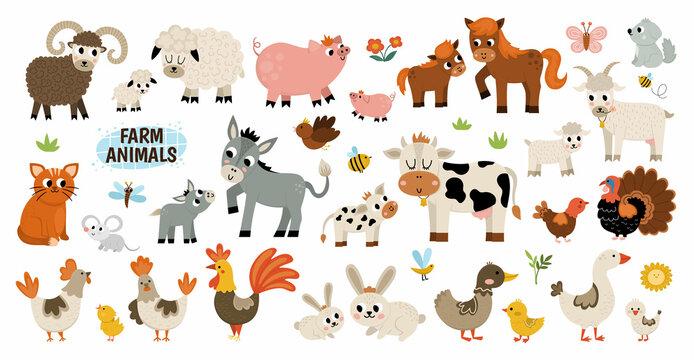In the gentle embrace of the early morning sun, a farmer strides across the fields, accompanied by the rhythmic sounds of clucking chickens, the soft baas of sheep, and the resolute lowing of cattle. These farm animals, often taken for granted, play a crucial role in the intricate tapestry of sustainable agriculture. As we navigate the complexities of food production and environmental stewardship, it becomes increasingly clear that these creatures are not merely commodities; they are integral partners in cultivating a resilient and thriving agricultural system. From enriching the soil through natural fertilization to assisting in pest management and providing diverse sources of nutrition, the contributions of farm animals are vital to the sustainability of farming practices. In this article, we will explore the multifaceted roles these animals play in promoting a balanced ecosystem, enhancing agricultural productivity, and supporting the movement towards a more sustainable future. Join us as we delve into the harmonious relationship between livestock and land, and uncover the essential functions that continue to shape our approach to farming in an ever-evolving world.
Table of Contents
- Understanding the Ecological Contributions of Farm Animals in Agriculture
- Enhancing Soil Health through Livestock Integration
- Promoting Biodiversity with Diverse Animal Species
- Implementing Ethical Practices for Sustainable Animal Husbandry
- Closing Remarks
Understanding the Ecological Contributions of Farm Animals in Agriculture

Farm animals play a crucial role in fostering ecological balance within agricultural systems. Their existence contributes to soil health, crop fertilization, and pest management, making sustainable farming practices more achievable. Manure from livestock serves as a natural fertilizer, enhancing soil quality and providing essential nutrients that promote healthy crop growth. Furthermore, grazing animals contribute to grassland maintenance by preventing overgrowth, thus supporting a diverse range of plant and animal life. Through this process, farm animals not only assist in ecosystem services but also help mitigate the impact of climate change by sequestering carbon in the soil.
Moreover, incorporating farm animals in agricultural practices fosters biodiversity and enhances resilience against pests and diseases. Mixed farming systems that include livestock alongside crops exploit the symbiotic relationships between species, leading to improved productivity. For example, chickens can naturally manage insect populations, while also providing eggs and meat, creating a closed-loop system of resource utilization. The benefits extend further, engaging practices like crop rotation and integrated pest management, which not only reduce the need for chemical inputs but also promote a healthier ecosystem overall. The harmony created by these interactions underlines the essential role of livestock in building a sustainable agricultural future.
Enhancing Soil Health through Livestock Integration

Integrating livestock into agricultural systems offers profound benefits for soil health, creating a symbiotic relationship that fosters sustainability. By utilizing manure as a natural fertilizer, farmers can enhance soil fertility through the addition of essential nutrients, improving crop yields and promoting biodiversity in the soil microbiome. Moreover, the process of grazing helps to aerate the soil, allowing for better water absorption and root penetration. As animals graze, they also consume unwanted weeds and invasive plant species, thus maintaining a balanced ecosystem and reducing the need for chemical herbicides.
Additionally, the practice of rotational grazing plays a crucial role in nutrient cycling and prevention of soil erosion. By rotating livestock among different pastures, farmers can allow overgrazed areas to recover, promoting the regrowth of native plants that anchor the soil, thus combating erosion. The careful management of livestock not only supports healthy grasslands but also boosts soil organic matter, which is vital for water retention and carbon sequestration. The following table summarizes the key benefits of livestock integration on soil health:
| Benefit | Description |
|---|---|
| Nutrient Cycling | Manure enriches soil with essential nutrients. |
| Soil Aeration | Grazing animals help to aerate and loosen compacted soil. |
| Weed Control | Livestock naturally manage weeds through grazing. |
| Erosion Prevention | Healthy pastures and root systems reduce erosion risks. |
| Increased Biodiversity | Support for diverse microbial communities within the soil. |
Promoting Biodiversity with Diverse Animal Species
In the intricate web of agricultural ecosystems, the presence of various animal species contributes significantly to enhancing biodiversity. Each farm animal, from cattle and sheep to poultry and bees, plays a unique role that bolsters the health of the environment. For instance, cattle help in nutrient cycling through their natural grazing habits, which encourages plant diversity in pastures. Similarly, poultry and pigs can aid in pest control by feeding on insects, thus limiting the need for chemical pesticides. The combining of different species promotes a balanced ecosystem, creating a more resilient agricultural landscape.
Moreover, the interdependence of diverse animal species fosters a symbiotic relationship that can reduce livestock disease and increase farm productivity. By adopting practices that encourage mixed farming—where multiple species are raised together—farmers can optimize feed efficiency and enhance soil health. Here are a few examples of benefits derived from diverse animal species:
- Nutrient Management: Different animals contribute unique fertilizers to the soil.
- Pest Reduction: Chickens can be utilized for natural pest control, lowering pesticide use.
- Pollination: Bees are essential for pollinating many crops, boosting yields.
- Resource Efficiency: Multi-species farms maximize the use of available land and resources.
Understanding these roles allows farmers to implement strategies that benefit not only their operations but also the larger ecosystem. The careful selection and integration of various animal species form the backbone of sustainable agricultural practices, leading to healthier farms and a more diverse and thriving natural environment.
Implementing Ethical Practices for Sustainable Animal Husbandry
Integrating ethical practices into animal husbandry not only enhances the well-being of livestock but also bolsters the overall health of agricultural ecosystems. By providing animals with suitable living conditions, proper nutrition, and opportunities for natural behaviors, farmers can ensure their livestock thrive. Ethical treatment fosters a deeper connection between farmers and their animals, leading to a commitment toward responsible farming. Key practices to consider include:
- Natural Feeding Practices: Employing locally sourced, organic feed to reduce dependency on artificial additives.
- Space and Comfort: Ensuring that animals have adequate space to roam, minimizing stress and promoting health.
- Veterinary Care: Regular check-ups and vaccinations to prevent disease and ensure animal welfare.
Moreover, implementing standards that prioritize animal welfare positively impacts consumers’ perception of farm products. Transparency in the treatment of animals can lead to a more conscious consumer base, encouraging sustainable practices across the agricultural sector. By adopting ethical methods, farmers can also align with certifications that resonate with environmentally aware shoppers. Consider the advantages of sustainable animal husbandry:
| Benefits | Description |
|---|---|
| Environmental Health | Reduces greenhouse gas emissions and promotes biodiversity. |
| Quality Produce | Higher nutritional value and better taste in meat and dairy products. |
| Economic Stability | Higher market prices and demand for ethically sourced products. |
Closing Remarks
As we reflect on the intricate tapestry of sustainable agriculture, the vital roles played by farm animals emerge with clarity and significance. These creatures, often overlooked in discussions surrounding ecological balance and food production, are essential partners in our quest for a more sustainable future.
From enriching the soil with their natural fertilizers to facilitating efficient pest control, farm animals contribute to a system that thrives on biodiversity and resilience. Their ability to graze and forage helps manage landscapes, promoting healthy ecosystems and reducing the need for chemical inputs. By integrating livestock into sustainable farming practices, farmers can create harmonious ecosystems that not only nourish the land but also support the livelihoods of communities.
As we move forward, it is imperative that we recognize and advocate for the welfare of these animals, understanding that their health and well-being are intrinsically linked to the health of our planet. By embracing holistic approaches that value the roles of all farm inhabitants, we can pave the way for agricultural practices that are not only productive but also ethically sound and environmentally friendly.
The journey toward sustainable agriculture is a collective effort, and recognizing the contributions of farm animals is a crucial step in this process. As we strive to cultivate a world where food production and ecological health coexist, let us champion the vital roles that these animals play, ensuring that they are celebrated for their importance in nurturing both the land and our future.



